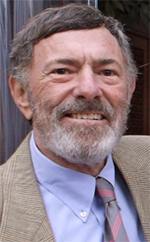The Life of Tony Trabert
Part 7
Mark Winters

Tony Trabert had first played the US National Championships just after he turned 18 in 1948. He reached the third-round losing to Earl Cochell, the No. 9 seed, 6-0, 6-3, 3-6, 6-4. An aside: three years later in 1951 the talented but behaviorally erratic Cochell was suspended for life, after a multitude of incidents in a 4-6, 6-2, 6-1, 6-2 fourth round match he lost to Gardnar Mulloy. But that's another story. (Click Here.)
During his amateur career, Trabert competed at Forest Hills seven times. By 1977, the exclusive Westside Tennis Club, located in a well-to-do neighborhood, had hosted the championships for more than 60 years. The facility had become antiquated and didn't have the necessary adjacent property to become a site capable of hosting the expanding Open.
Slew
Finding a new location to host the championships' fortnight had been discussed by USTA officials for some time. But as former USTA president Robert Kelleher had once commented about tennis administrators being "little more than shoe clerks", nothing was done. That was until William Ewing (Slew) Hester became USTA President in 1977.

Flying into New York for a USTA Board meeting, about to land at LaGuardia Airport, he happened to glance out the airplane window and saw the snow-covered Singer Bowl ruin, where the 1964-65 World Fair had been held.
Hester was big and bold. He was Babe Ruth in size and like the baseball great, he was fond of cigars and sour-mash whiskey. An all-around athlete in college, his on court skills were first rate.
During his competitive years, he won more than 500 local and national tennis titles. Delightfully candid, he once admitted that he liked to drink all night and play tennis all day.
Being from miniscule Hazlehurst, Mississippi, Hester spoke "Southern" with an accent that was so syrupy he could have been a "Gone WithThe Wind" cast member. A savvy salesman, he had made a fortune as a "wildcatter", selling interests in prospective oil wells.
The smooth-talking Hester knew deal making and he was shrewd. He approached the City of New York and negotiated an arrangement for the 16-acre facility that resulted in a $10 million dollar refurbishing by the USTA. Armstrong Stadium became a 20,000-seat arena--the largest in tennis at the time. There was also a 6,000 seat Grandstand Court alongside, as well as 25 additional courts.Caption: Tony Trabert, Mark Winters, Tournament Director, Bill Talbert and Pat Summerall on the first day in 1978 at "The House that Slew Built".
He had promised that Flushing Meadow would be ready to host the 1978 Open. It was--barely.
There were a lot of steel girders visible when the tournament began and landscaping was non-existent. When criticized, he responded in true Hester fashion – "If people want tradition, I'll plant some ivy".

But attendance in the inaugural year at Flushing Meadow was 275,300. This was roughly 57,000 more than it had been at the Forest Hills farewell.
Tony?
By now, those who have continued to read my story are asking – What does this have to do with Tony Trabert? Here is the answer. Every afternoon prior to the dinner hour, Hester could be found sitting in a corner of "Slew's Place", the restaurant/bar named for him at the "new" Open. He would sit there regaling anyone who passed by with updates on the day's action.
He and Trabert had a warm relationship. Because of the friendship, Tony (often with Pat Summerall) would spend some of his television break time at Slew's Place. It was a comfortable spot where he could escape, relax and enjoy himself because "Slew" was the show. Tony regularly gave me an "if you are free…" heads up – meet me in front of the door to Slew's.
It was like being invited to attend a session of the Tennis UN. Slew simply being Slew held court with the names in the game and anyone else who happened by. Because of Trabert, I had access to the show.
Later in the tournament, when I would show up before Tony arrived, those monitoring the door would recognize me as "Tony's doubles partner" and let me enter. I could add more about my experiences the first year at Slew's, but this story is about Tony.

Hester envisioned turning the final major of the year into the best tournament in the world. It was his goal driven focus.
Forty-three years later, that may have happened. Sadly, few remember Slew's name, let alone give him kudos for his foresight.
Hester was inducted into the International Tennis Hall of Fame in 1981. His biography notes, "The new facility was aptly called, 'The House that Slew Built'." He passed away in 1993 at the age of 81.




